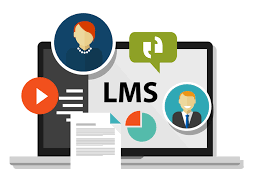How To Pick An LMS For Your Business
 A growing number of businesses today make use of learning management systems to onboard new employees and train existing ones. The benefits of such a tool are quite obvious - it helps businesses organize large volumes of training data in one place. It also helps the organization monitor the performance of its learners and make learning more effective through increased accessibility, better personalization and improved resource allocation.
A growing number of businesses today make use of learning management systems to onboard new employees and train existing ones. The benefits of such a tool are quite obvious - it helps businesses organize large volumes of training data in one place. It also helps the organization monitor the performance of its learners and make learning more effective through increased accessibility, better personalization and improved resource allocation.
But picking a learning management system can be an overwhelming experience. There are dozens of features and hosting options to choose from. In this article, we will demystify the process and help business owners pick an LMS that is right for their business.
Educate on features
A typical LMS tool comes equipped with a host of features that may seem excessive at first glance. But it is important to understand that every learner is unique and the best LMS tools come equipped with features that cater to a wide range of learners. Large enterprises look for tools that enable a more scientific learning process. This includes features like gamification, certificate management and graphical report. A business that has a remote learner base would need an LMS that works well offline and can be accessed over mobile. Look into each of these features and make a note of whether such a feature makes sense for your audience.
Estimate bandwidth
The LMS bandwidth consumption can vary widely among organizations, and sometimes even within the various departments within one business. This is because industries that require video-based learning tools would need large storage systems compared to those that rely on text-based lessons. Similarly, an organization with a distributed workforce would rely on live classrooms and webinars for knowledge-sharing - these are technologies that consume a lot of bandwidth. Estimate the number of person-hours and the bandwidth that employees in your organization would consume on your LMS tool each month. This will give you a base metric that your preferred LMS must serve.
Check your budget
Popular LMS tools that come loaded with dozens of features are also priced higher than others. As a small business owner, you may not need a lot of such features and it does not really make sense to pay for features that you do not need. You may be tempted to finalize your budget first then and identify an LMS that fits these constraints. That however may not be ideal since LMS is a tool targeted at your cost-centers and businesses often tend to skimp on these products, given a chance. A better strategy is to make use of one of the LMS vendor matching tools where you may input the features you need and the tool will be able to recommend tools that fit your needs.
Try before you buy
Finally, it is worth pointing out that the real value of an LMS can only be gauged by using it. There are very few paid tools out there that do not have a free trial option. There are others that have a free tier that gives business owners a chance to get their feet wet with the tool before paying for premium options. As a business owner, you must utilize these free trial features and plans exhaustively before making a decision on whether the tool is a good fit for your needs.
Trott advises small businesses on their market go-to strategy. He may be reached at [email protected]

 Delicious
Delicious Digg
Digg StumbleUpon
StumbleUpon Propeller
Propeller Reddit
Reddit Magnoliacom
Magnoliacom Newsvine
Newsvine
Comments
Post new comment